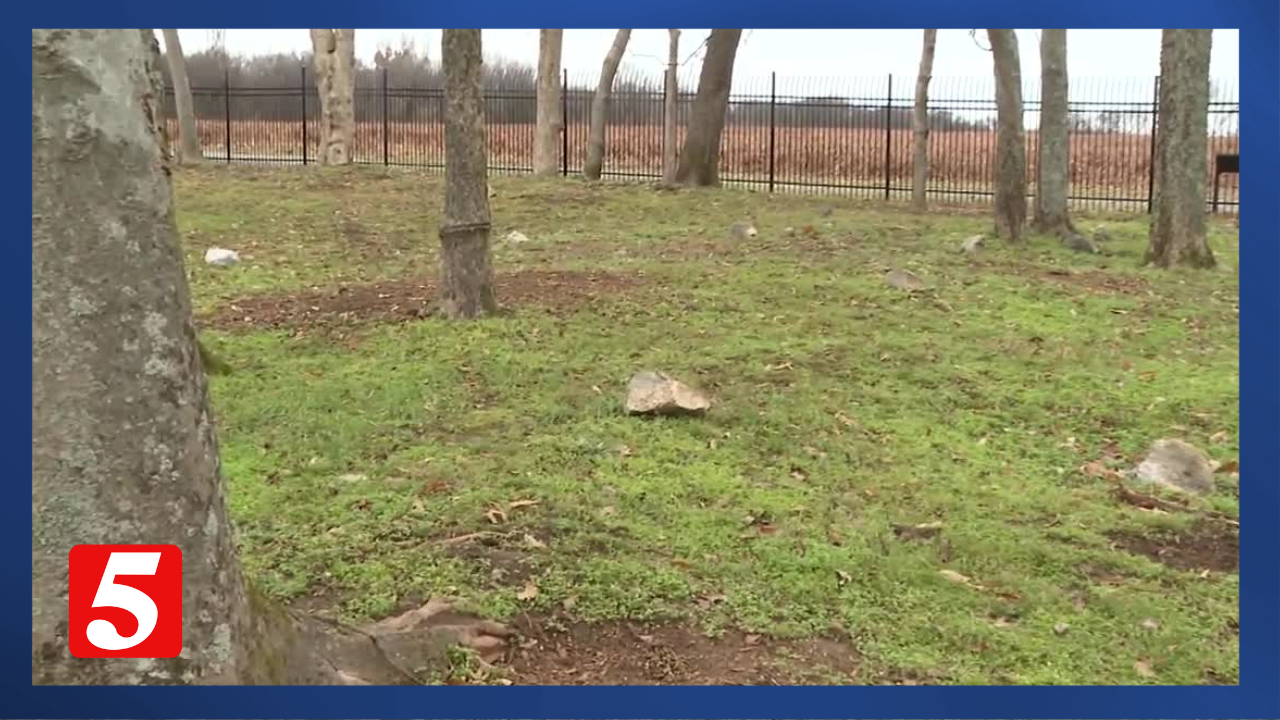NASHVILLE, Tenn. (WTVF) — It’s a popular place that thousands visit each year to learn about Nashville’s history. Andrew Jackson’s Hermitage provides a glimpse of the former president’s life. But there’s more to be discovered.
For centuries, we’ve been able to tour Jackson’s home, view portraits, and explore the cabins where enslaved people lived. But their graves remain hidden.
“The people who lived and died here — where were they buried? And we have not been able to answer that part of the story,” said Jason R. Zajac, president and CEO of the Andrew Jackson Foundation.
That is until now.
“To the left here are the burials of at least 28 enslaved people,” said Tony Guzzi, chief of preservation and Site Operations. "Although their names remain unknown, 28 stones now mark their final resting place — roughly the same number of enslaved people the foundation thinks died at the Hermitage. Jackson is known to have owned more than 300 enslaved people before the Civil War."
“What the cemetery does is it really connects you to the fact that slavery did take place here,” said Guzzi. “It was very real, and this is a tangible connection to that past, so we feel it’s important to tell visitors these stories.”
Visitors like Michael Reph, who traveled from Seattle with his mother for a tour, unexpectedly discovered the cemetery during our interview and were struck by its significance.
“Realizing these are real people that lived on this property,” explained Reph. “Although they were slaves of Andrew Jackson’s family and the legacy of the family, it’s something that we should shine a light on. We should have discussions about it in our country and not be afraid to talk about it.”
The Hermitage tried many times to uncover the graves, but it didn't work out until an anonymous donor provided resources to help find these missing pieces. An important clue was an agricultural report from 1935.
“What we saw in the aerial images and with the maps is that what this author of the report described was actually true on the ground,” added Guzzi.
Using ground-penetrating radar technology, experts from the Vanderbilt Institute of Spatial Research and TRC Environmental Corporation located 28 remains without disturbing them.
“They were looking for what the archaeologist would recognize as indications of potential or possible burial,” said Zajac.
History that was hidden in plain sight is now revealed for all to see.
“This is a place where we hope people will reflect upon what slavery was and have a more meaningful connection to the folks who are buried here,” explained Guzzi.
The foundation aims to talk to the community, including the descendants of those enslaved, to decide how to memorialize the site. For now, visitors can join the “In Their Footsteps” tour, available at no additional cost, which focuses on the lives of the enslaved and includes a visit to the new cemetery.
Do you have a story that needs to be told? You can email me at patsy.montesinos@newschannel5.com

My friend and colleague Carrie Sharp had a lot of fun last week, on an adventure to a country more than three thousand miles away! She’s back now – sharing her Adventures in Iceland through stories, and incredible images of this remarkably beautiful and unique island nation (kudos to Chief Photographer Catherine Steward)! But did you know Nashville has something very important in common with Iceland? Tourism! Here, Carrie explains how a volcanic eruption decades ago helped save the country’s economy from collapse!
-Rhori Johnston




